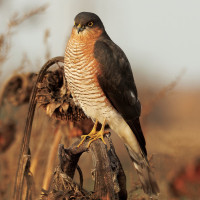Descrizione
The area around Cromford is part of the Derwent Valley World Heritage Site. It's cotton mills were part of the industrial revolution, Cromford Mills were first built in 1771. Frosone are a speciality of the site, whilst they are occasionally seen in trees near St Mary's Chapel, they usually are to be found on trees near Willersley Castle, once a hotel now a adventure school. Unfortunately the area of the school is PRIVATE (Please Do Not Trespass). (*1) Good views of the trees near Willersley Castle can be had on pavement of the A6 road, a telescope is advised (press STAR on map). (*2)
Be sure to check for birds from the bridge over the River Derwent, both Smergo maggiore and Merlo acquaiolo are often seen here (press Star). Germano reale, Gallinella d'acqua, Folaga, Capinera and Luì grosso are often seen along and beside the canal. (*3) For those with more time continue along the canal past the Aqueduct, Derbyshire Wildlife Trust have a reserve further along this path (press STAR). (*4) Be sure to check Cromford Pond in the village for birds (press STAR).
Dettagli
Accesso
The long distance A6 road from Luton in Bedfordshire to Carlisle in Cumbria, runs directly beside the site, in Cromford look for 'brown' signs Cromford Mill/Cromford Canal, there are a number of car parks at the mill (all fee payable).




